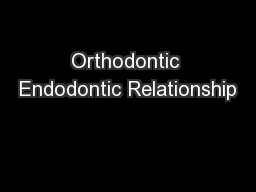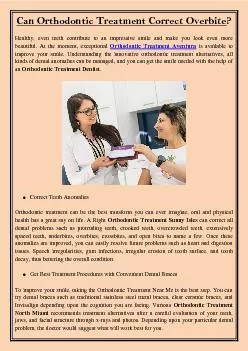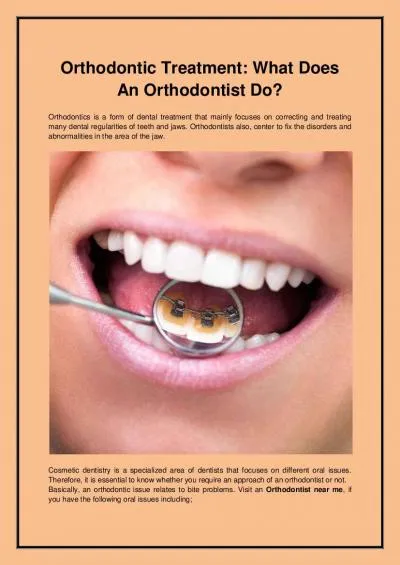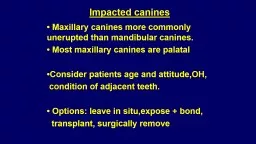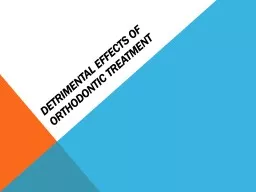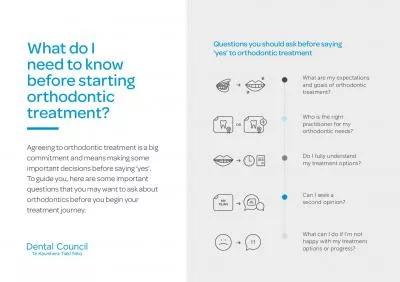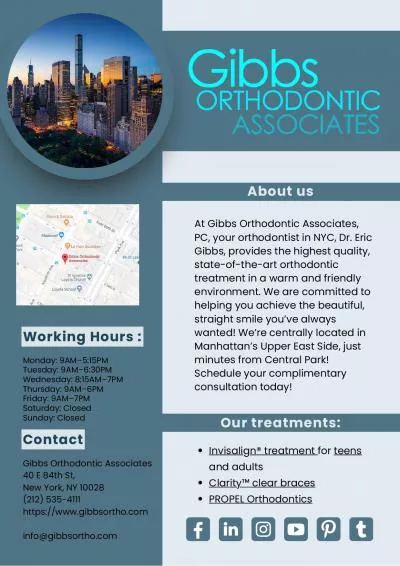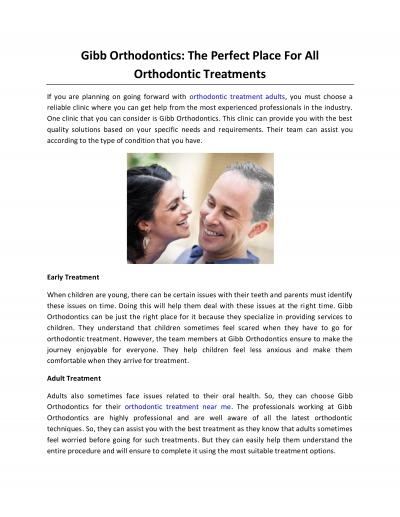PPT-In the name of GOD Orthodontic treatment planning
Author : lindy-dunigan | Published Date : 2018-03-14
Presented by Dr Somayeh Heidari Orthodontist Reference Contemporary Orthodontics Chapter 7 William R Proffit Henry W Fields David MSarver 2007 Mosby
Presentation Embed Code
Download Presentation
Download Presentation The PPT/PDF document "In the name of GOD Orthodontic treatmen..." is the property of its rightful owner. Permission is granted to download and print the materials on this website for personal, non-commercial use only, and to display it on your personal computer provided you do not modify the materials and that you retain all copyright notices contained in the materials. By downloading content from our website, you accept the terms of this agreement.
In the name of GOD Orthodontic treatment planning: Transcript
Download Rules Of Document
"In the name of GOD Orthodontic treatment planning"The content belongs to its owner. You may download and print it for personal use, without modification, and keep all copyright notices. By downloading, you agree to these terms.
Related Documents


